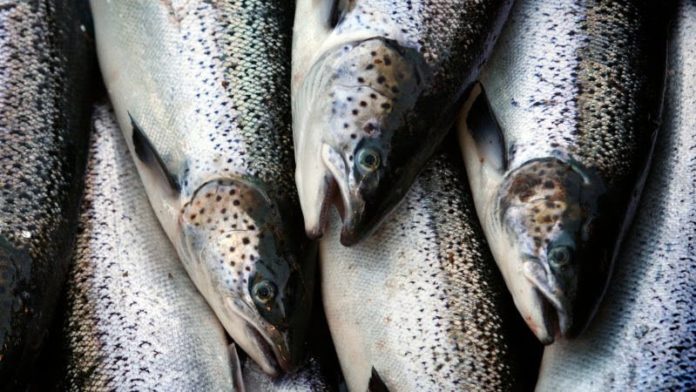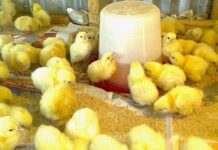The Food and Drug Administration announced on Friday that it is lifting an import ban that prevented a brand of genetically modified salmon—dubbed “Frankenfish” by some—from reaching U.S. shopping selves, CNN reported.
The FDA originally cleared AquaAdvantage salmon, which is genetically engineered to grow year-round and thus reach the market twice as fast as unmodified salmon, in 2015 following a lengthy, years-long review, CNN wrote. However, Congress passed a law in 2016 mandating the formation of labeling guidelines informing customers that the fish was genetically modified—standards that weren’t finalized until late last year.
CNN reported:
In December, the [U.S. Department of Agriculture] issued the standard, requiring manufacturers, importers and certain retailers to disclose whether a product was bioengineered using either text, a symbol, a electronic or digital link, and/or a text message.
On Friday, FDA Commissioner Scott Gottlieb said because of the 2016 law and the USDA’s standard, his agency “no longer has the authority to issue labeling guidance.”
“However, the FDA believes this Congressional mandate has been satisfied by the USDA’s issuance of final regulations implementing that law in late 2018 because the law and regulations require that human food containing GE salmon bear labeling indicating that it is bioengineered,” Gottlieb said in a statement.
According to the Star Press, the company behind AquaAdvantage, AquaBounty, has a fish farm in Albany, Indiana that was awaiting regulatory approval to begin importing fish eggs from another company facility on Prince Edward Island in Canada. Seafood industry publication IntraFish reported that AquaBounty’s worth exploded by $50 million almost immediately following the FDA announcement. (While it was trading in the range of $2-2.25 for much of the week, its stock briefly broke $5 late on Friday.)
The FDA found that AquaAdvantage salmon pose no risk to human health, are healthy themselves, and would have no significant impact on the environment. As the Washington Post noted in 2017, the fish are designed to be exclusively female as well as sterile, though the process is not entirely effective, and AquaBounty’s Prince Edward Island facility is surrounded by salt water, where it believes the eggs cannot survive. The fish is already available in limited qualities on the market in Canada, where labeling is discretionary and up to grocers, the Post added.
As the Associated Press reported, however, a “coalition of consumer, environmental and fishing groups” filed a lawsuit asking for the FDA’s approval of the fish to be overturned. That suit is still pending.
We think a remedy in our case would stop sale of the fish before they’re allowed to be sold,” George Kimbrell, a legal director for the Center for Food Safety, which is opposing the approval in court, told the AP.
Kimbrell told the AP that his organization had concerns that the fish could escape and breed with unmodified salmon in the wild, as well as that disclosure rules only mandate the use of the relatively unfamiliar term “bioengineered” and can hide even that language behind a scannable QR code on the package. The labeling implementation won’t start until 2020, and compliance won’t be mandatory until 2022, the AP wrote.
“A loophole has now been created that will allow the first genetically modified animal engineered for human consumption to enter the US market: GMO Atlantic salmon,” the Pacific Coast Federation of Fishermen’s Associations executive director Noah Oppenheim told the SF Bay Area Independent Media Center. “Fishermen have been fighting against the possibility of these Frankenfish entering our waters and our markets for years, and we won’t stop now.”
The salmon is the only genetically modified animal approved by the FDA to be sold as food to humans, though many other products are likely to follow in Aqua Advantage’s wake. According to the AP, Aqua Bounty says that it expects its Indiana farm to soon receive final certification, and the salmon will take about 18 months to grow to a harvest size of 10 pounds after they arrive.
Source: CNN/ Star Press/AP








